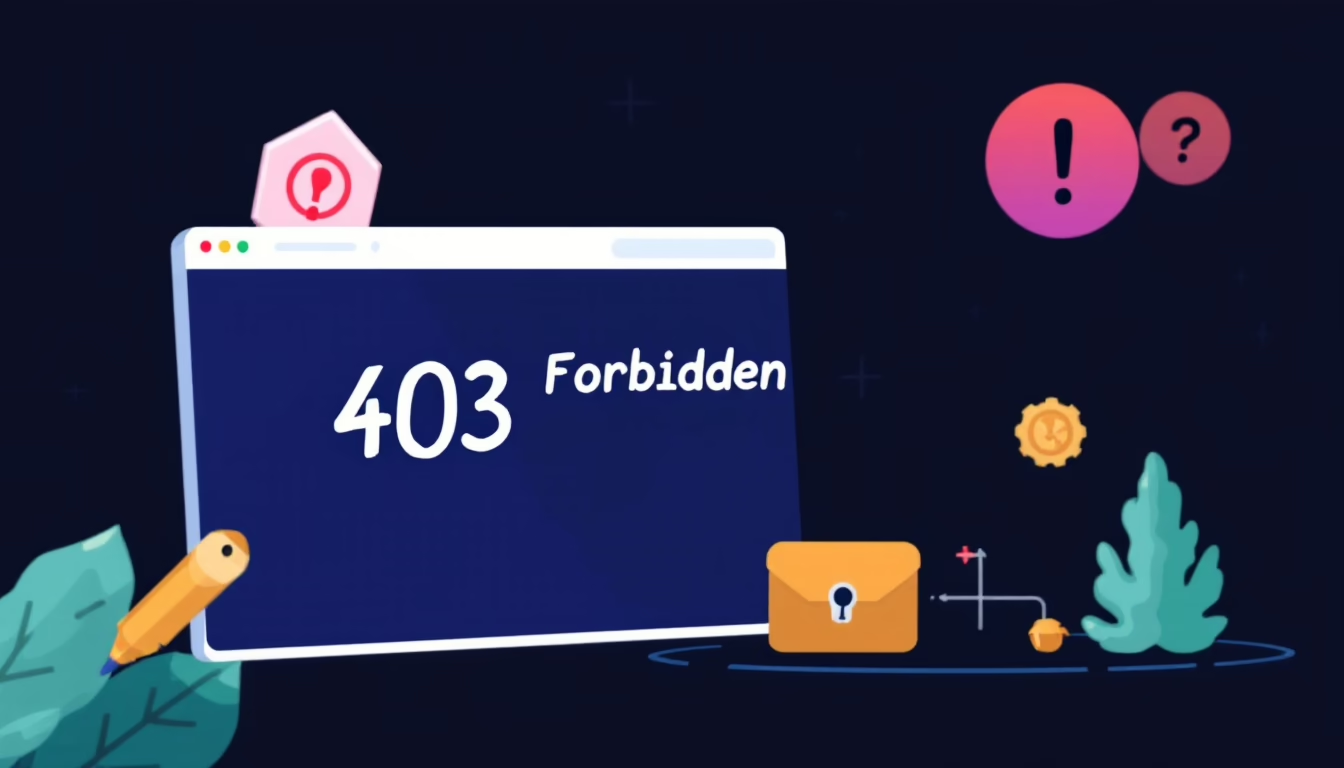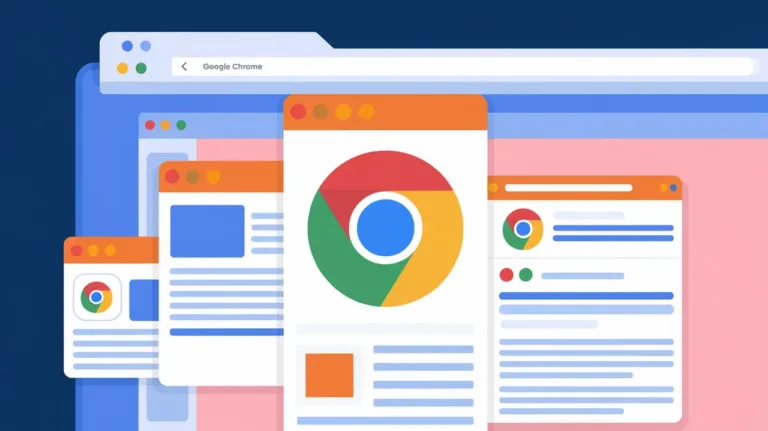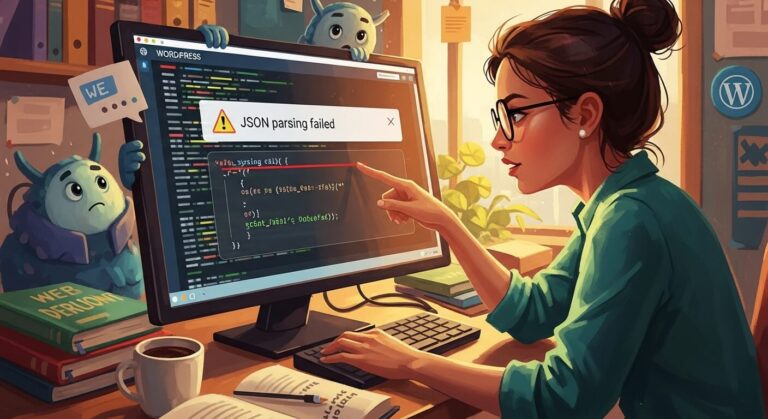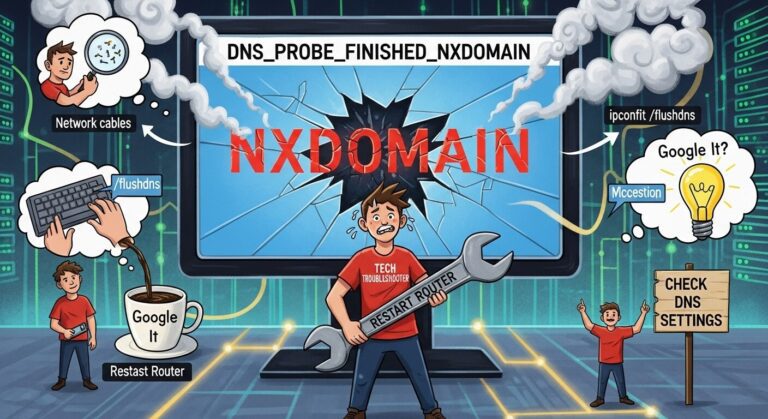8 Easy Ways To Fix 403 Forbidden Error

8 Easy Ways To Fix 403 Forbidden Error – When you visit an empty website directory or a specific page with a permission error, you may receive the 403 errors.
Also read: 9 Ways On How To Fix DNS_PROBE_FINISHED_NXDOMAIN Error
This is because most websites are configured to prevent attackers from accessing sensitive files by disabling directory browsing.
However, if you or your visitors notice this mistake on your site, you must resolve the problem immediately or risk losing critical traffic. Because the causes of 403 errors differ, there are numerous ways to address them.
8 Easy Ways To Fix 403 Forbidden Error
We will describe the various forms of 403 errors, their possible causes, and eight solutions to the message “you don t have permission to access on this server” error.
Error code: 403 Forbidden Error
Error type: Client-side error
Error variations: Forbidden: You don’t have permission to access [directory] on this server. HTTP Error 403 – Forbidden. Error 403 – Forbidden. 403 forbidden request forbidden by administrative rules. 403 Forbidden. Access Denied – You don’t have permission to access. Error 403
HTTP 403. Forbidden.
Error causes: Missing index page. Broken WordPress plugin. Wrong IP address. Malware infection
New web page link.
What Does 403 Forbidden Mean?
The HTTP response code 403 Errors – you don t have permission to access on this server occurs when the web server recognizes the request but cannot offer additional access.
Causes of 403 Forbidden
HTTP 403 forbidden error or you don t have permission to access on this server are frequently caused by a client-side access misconfiguration, which means you can typically repair the problem yourself.
The file or folder permission settings, which control who can read, write, and execute the file or folder, are a common cause of these issues.
Also read: 27 Best Chrome Extension For Web Developers In 2025
In this scenario, there are two possibilities: either the website owner changed the settings so that you couldn’t access the resources, or they didn’t set the proper rights.
The second most typical cause is that the settings in the .htaccess file are corrupt or wrong. This could occur after you have made changes to the file. Fortunately, the problem is easily resolved by just writing a new server configuration file.
Aside from those two main causes, below are some more potential sources of the error:
- Missing index page – The website’s homepage is not index.html or index.php.
- Faulty WordPress plugin – If a WordPress plugin is not properly configured or is incompatible with another plugin, it may cause 403 errors or in other words you don t have permission to access on this server.
- Wrong IP address – the domain name leads to an incorrect or outdated IP address, which currently hosts a website that prevents you from accessing it.
- Malware infection – A malware infection might corrupt the .htaccess file on a regular basis. Before you may restore the file, you must first eliminate the infection.
New web page link – The site owner may have changed the link to the page, which now differs from the cached version.
How to Fix the 403 Errors
Because the HTTP 403 forbidden error is strongly tied to file access rights, this will be the primary emphasis of the solutions presented below. However, there are various solutions to this problem, such as cleaning the browser cache or screening for malware.
Also read: 15 Simple Solutions To Fix The Net::Err_Cert_Authority_Invalid Error
Let’s take a closer look at each of the eight methods for resolving HTTP 403 errors.
Please keep in mind that, while the techniques outlined here are mostly for WordPress, they can also be used to other websites.
1. Check the .htaccess File
You may be unfamiliar with the .htaccess file because it is frequently hidden in the site directory. However, if you utilize Hostinger File Manager, the file is automatically available in your public_html directory.
To find it, follow these steps:
- The File Manager may be found on the hPanel dashboard.
- Open the public_html directory to find the .htaccess file..
If you’re using cPanel, do the following:
- Navigate to File Manager in cPanel.
- Look for the .htaccess file in the public_html directory.
- If you can’t find the file, go to the top-right corner of the screen and select Settings, then check the Show Hidden Files (dotfiles) option.
The .htaccess file is a server configuration file that mostly modifies the Apache Web Server settings.
Although the file is available by default on most websites, you must manually create a new file if your website lacks it or if it was accidentally destroyed.
Also read: How to Fix Chrome’s Err_Cache_Miss Error
Now that you’ve located the file, perform the following steps to determine whether a faulty configuration is to blame for the error:
- To make a backup, right-click on the file and select Download.
- Delete the file after you have a backup.
- Try visiting your website. If it functions well, it means the file was corrupted.
- Log in to your WordPress dashboard and go to Settings -> Permalinks to create a fresh .htaccess file.
- Click the Save Changes button at the bottom of the page without making any changes.
This creates a fresh .htaccess file for your website. If this does not resolve the problem, proceed to the next method.
2. Reset Files and Directory Permissions
Incorrect file or folder permissions are another probable reason of HTTP 403 forbidden. When files are created, they are given specified default file permissions that govern how you can read, write, and execute them.
FTP allows you to change the permissions of files and folders. To start, you should:
- Configure and connect an FTP client to your website.
- When you’re connected, right-click public_html and choose File Attributes.
- Enter 755 in the Numeric value column, check Apply to directories only, then click OK.
For file permission numeric values, the typical practice is to use 755 for folders, 644 for static content, and 700 for dynamic content.
- Repeat steps 2 and 3 after modifying folder permissions, but this time enter 644 in the Numeric value area and select the Apply to files only option.
After that, try accessing your website again to see if the error has been repaired.
3. Disable WordPress Plugins
If you’ve gotten this far and none of the other ways have worked, the error is most likely caused by an incompatible or defective plugin. In this step, we will disable plugins to see if this resolves the 403 forbidden error.
Instead of deactivating each plugin individually, we recommend disabling them all at once. You should be able to recognize the problem and work toward a solution if you use this strategy. What you must do is as follows:
- FTP into your hosting account or use the file manager to navigate to the public_html -> wp-content folder.
- Find the plugins folder.
- To disable all plugins, rename the folder to something else, such as “disabled-plugins.”
Try reloading the website. If the error has vanished, the source of the problem is a faulty plugin.
Rename the folder plugins again. You must now disable the plugins one by one from your WordPress dashboard and verify that the site is still operational. This will allow you to identify the malfunctioning plugin.
If you find it, either update or uninstall the plugin. If the error persists, you may need to contact your hosting provider for assistance.
4. Upload an Index Page
Check the name of your website’s homepage; it should be index.html or index.php. If it isn’t, there are two other options. The easiest and most straightforward option is to rename the homepage to index.html or index.php.
If you want to preserve your current homepage name, upload an index page to your public html directory and create a redirect to it.
Here are the actions to take:
- Upload to your public_html directory, place an index.html or index.php file. To do so, use your hosting account’s file management or FTP.
- Open the .htaccess file.
- Insert this code into your index.php or index.html file to redirect it to your existing homepage. Remember to replace homepage.html with the actual name of the page.
Redirect /index.html /homepage.html
5. Edit File Ownership
If you utilize Linux or VPS web hosting, incorrect file ownership can result in the 403 forbidden error.
Files and folders are typically allocated to an Owner, a Group, or both. Keep in mind that changing ownership in these contexts requires SSH access. To connect to the VPS, you’ll also need an SSH terminal.
After connecting SSH to your website server, use the following SSH command to determine ownership:
ls -1 [file name]
The end result will look like this:
-rwxrw-rw- 1 [owner][group] 20 Jul 20 12:00 filename.txt
Take a look at the owner and group section. Your hosting account’s username should be the correct owner. If you observe different file ownership, use the chown Linux command to change it. The basic syntax for chown is as follows:
chown [owner][:group] [file name]
If you are unsure about utilizing SSH, please contact our support staff for assistance.
6. Verify the A Record
The “you don t have permission to access on this server” error can also occur if your domain name points to an IP address where you do not have access to the content. As a result, ensure that your domain name points to the right IP address.
Access the DNS Zone Editor on your hPanel to see if the domain A record is correctly pointed:
- Access your hPanel.
- Navigate to the Advanced tab and select DNS Zone Editor.
- A list of DNS records will be displayed. In the type column, look for a record with the label A.
- In the Content column, look for the IP address.
- Click Edit to modify it if it’s referring to the wrong IP address. When you’re done, click Update.
If you can’t find the relevant record, go to the Manage DNS records section and create a new one. Select A as the Type and enter the right IP address in the Points to area. Then, click the Add Record button.
If you recently switched web hosts and failed to change your nameservers, your domain may still be referring to your old web host. When your old host cancels your account, a 403 errors status code is generated.
7. Scan for Malware
Malware is another possible source of the 403 forbidden. If malicious software infects your WordPress site, it may regularly inject unwanted code into the .htaccess file. As a result, even if you continue to repair the file using the first approach we described, the issue will persist.
Scan your website for any viruses. There are numerous WordPress security plugins available for this purpose, such as Sucuri or Wordfence.
Most WordPress security plugins, such as WordFence, can detect and remove malware. Once the plugin has identified all affected files, you’ll be given options for dealing with them, such as deleting or restoring them.
Another option is to restore the website from backup files. If you don’t have a complete backup of the site files, you can restore it using the database backup.
8. Clear Your Web History and Cache
403 errors can also be caused by your browser’s cache and cookies. Cache is a type of data storage that allows a website to load faster the next time you visit it. However, the website’s link may have been altered, and the actual web page link is now different from the cached version.
Another possibility is that the issue is caused by cookies. It’s possible that you typically log in to a website, but your most recent login attempt resulted in this error message.
This problem should be resolved by clearing the browser’s cache and cookies. It is important to note that deleting the cache may cause your next visit to the website to take a lengthy time because your browser will request all of the site files again. Clearing the cookies also logs you out of all websites where you are logged in.
To remove the cache and cookies in Google Chrome, follow these steps:
- Select Settings by clicking the three-dot icon in the upper right corner.
- Click Clear browsing data under the Privacy and security area.
- Select the time window for data erasure from the drop-down option. Then, check the choices for Cookies and other site data and Cached images and files.
- Select Clear data.
After you’ve done all of the steps, return to the website and log in if necessary. If none of these alternatives work, we recommend contacting our support team via live chat to resolve the problem.
Final Thoughts
403 forbidden error can be quite frustrating since they prevent you from accessing a site. They are most commonly caused by wrong file permissions, although there are various additional possibilities, such as a missing index file, defective plugins, or even malware infection.
It can be difficult to determine the true reason of the “you don’t have permission to access on this server” error. However, by following the steps outlined in this post, we’re confident you’ll be able to get your website back up and running.
To summarize, these are the steps you need perform to remove the 403 errors notice from your WordPress site:
- Examine the .htaccess file.
- File and directory permissions should be reset.
- WordPress plugins should be disabled.
- Create an index page.
- Change file ownership.
- Check the A record.
- Get rid of any malware.
- Clear the web browser’s cache and history.
The HTTP error code 403 forbidden is just one of several. You may have seen various client-side failures, such as the 404 errors, or server-side issues, such as the 504 gateway timeout, as a website owner.
We encourage you to continue learning about these problems so that you will be prepared to deal with them if they surface on your website.





